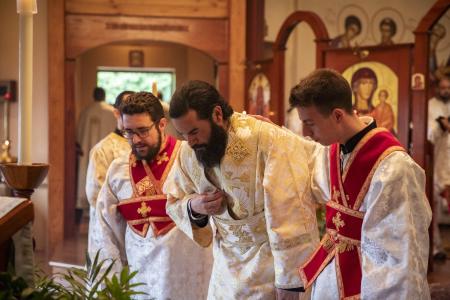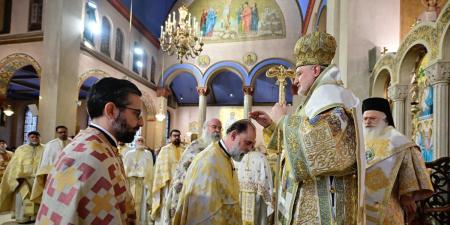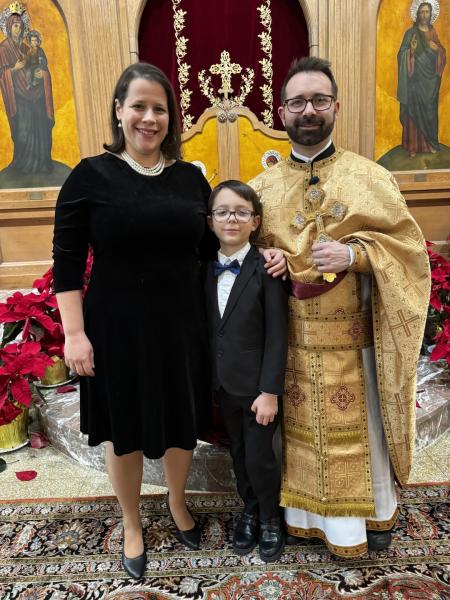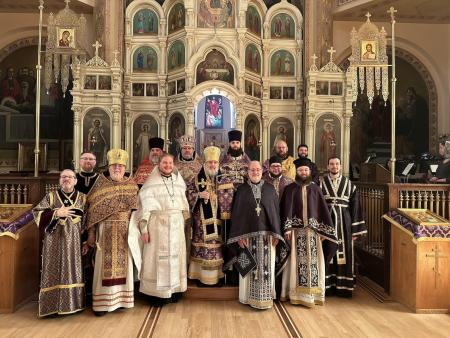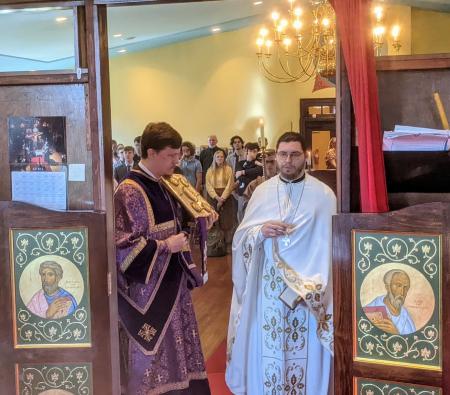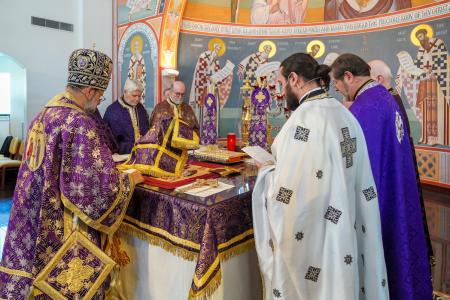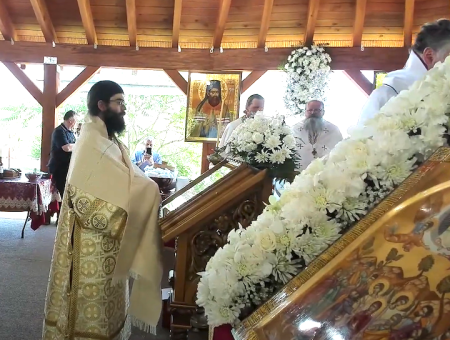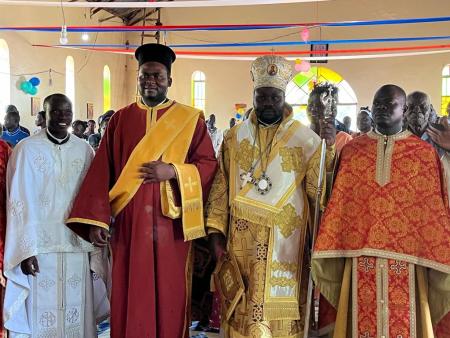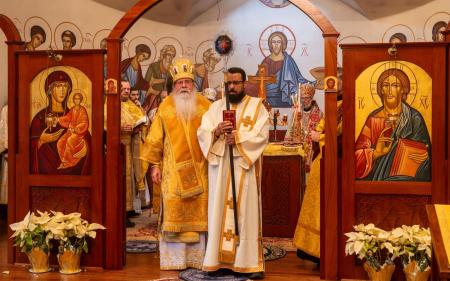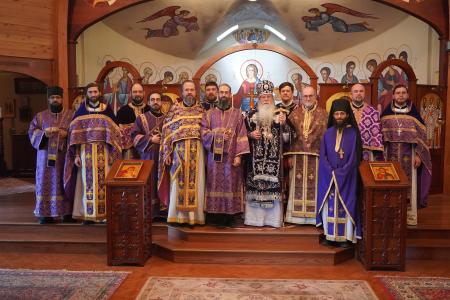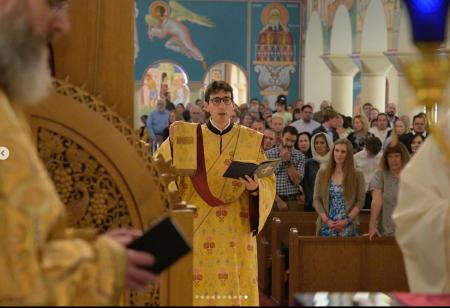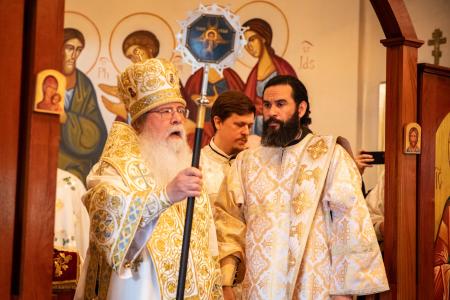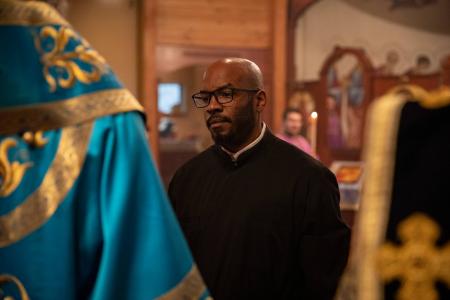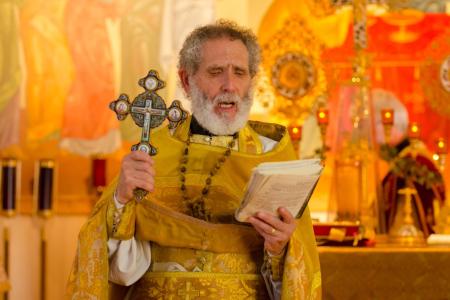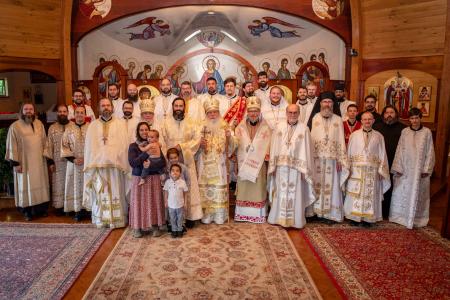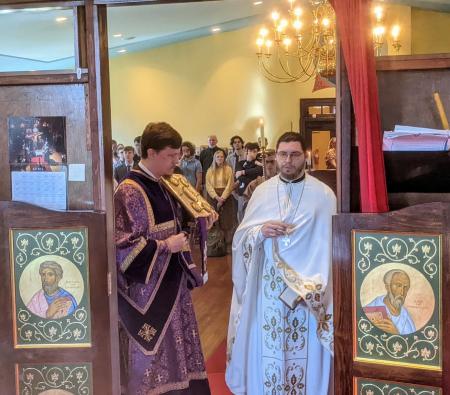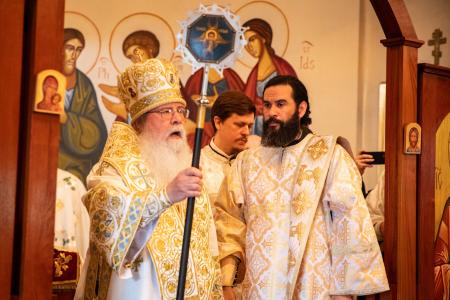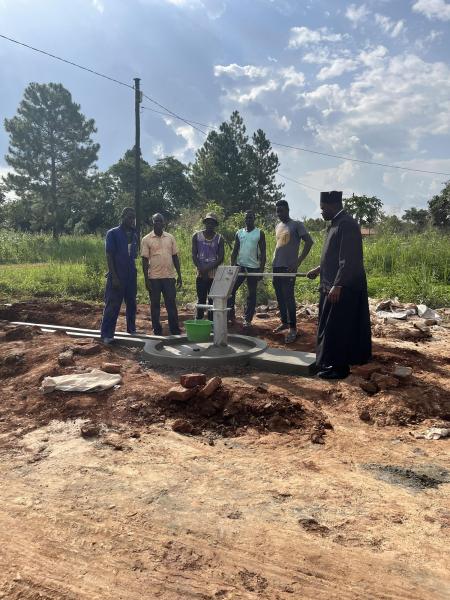SVOTS Community Discusses Thought and Culture at Paideia
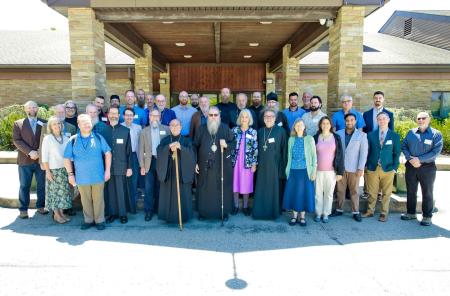
St Vladimir's Seminary was a big part of this year's Paideia Conference at Antiochian Village, as faculty, staff, and alumni joined discussions about the life of the mind, the creation of culture, and our life in Christ.
Around fifty Orthodox Christians convened for the conference, held May 29 through June 1, 2024. Paideia held its second annual event this year as a “society of Orthodox Christians drawing upon the riches of holy tradition to address issues of modern and postmodern thought and culture.” Paideia comes from the ancient Greek word meaning “education” or “learning,” and most importantly “culture” as a whole.
Notable contributions from members of the seminary community included keynote addresses by St Vladimir’s Seminary President Fr Chad Hatfield and Alumnus Fr Thomas Soroka; talks were given by Professor Fr Bogdan Bucur; Alumnus and St Vladimir’s Seminary (SVS) Press Senior Editor Fr Ignatius Green; Alumnus and Assistant Professor of Literature Fr Anthony Gilbert; Associate Professor of Medicine Dn Sampson Ryan Nash; Alumnus Fr Alexander Earl; and SVS Press author Dr Edith Humphrey (read more about each paper and speaker here). Fr Chad was also named a co-convener of the Paideia Conference moving forward.
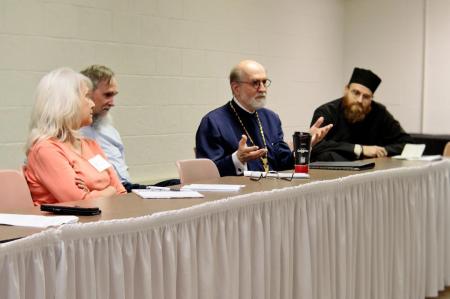
Listen to Fr Chad Hatfield’s Keynote Address
To learn more about the conference and register for future editions, visit the Paideia Society’s website: paideiasociety.org.
Paideia was the first of two gatherings of theologians and scholars the seminary community participated in this June. The following week, from June 6 through 8, faculty and alumni joined the annual gathering of the OTSA.

Photos courtesy of the Paideia Society

